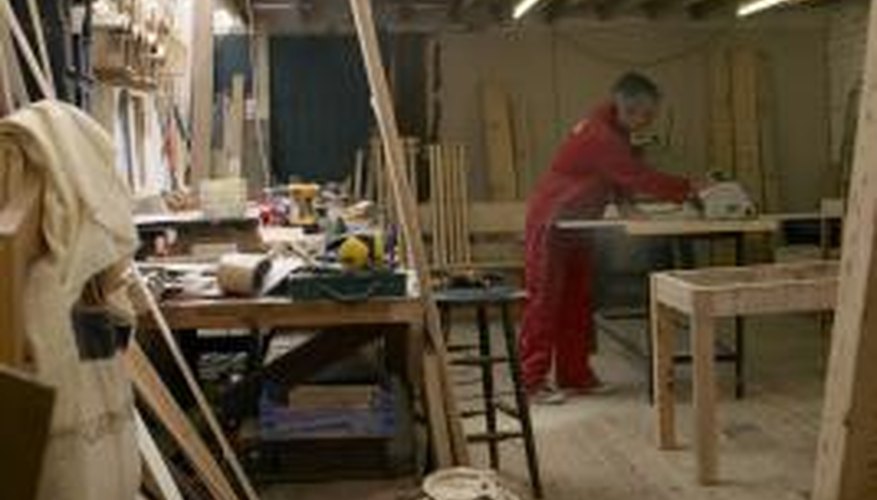Accurate calculations of wood beam strength are essential in construction. Underestimates will compromise the safety of the structure, and overestimates will lead to unnecessarily high costs. Wood beam strength is expressed in units of volume and is known as the "section modulus." To calculate the section modulus requires additional data on structure and loads. For reasons of safety, this process should not be attempted by unqualified individuals.
Determine the load that will be on the beam. At this stage of the design process, the combined live load and dead load on the beam should already have been calculated. Dead loads refer to loads that remain constant on the beam (for example the roofing and other permanent structures on top of the beam), while live loads refer to loads that vary over the life of the beam (for example rain or people working on the roof).
- Accurate calculations of wood beam strength are essential in construction.
- At this stage of the design process, the combined live load and dead load on the beam should already have been calculated.
Ensure the identified load takes into account the entire load of any roofing or other component bearing on the beam. For example, a roof section measuring 100 square feet and with a weight of 4.54kg for each square foot will bring 454kg to bear on the beam.
Calculate the maximum bending moment (Mmax). The formula for this is (weight x length) / 8. If the beam in the example above is 10 feet, this equates to (1000 x 10) / 8, or 1250 foot-pounds.
- Ensure the identified load takes into account the entire load of any roofing or other component bearing on the beam.
- If the beam in the example above is 10 feet, this equates to (1000 x 10) / 8, or 1250 foot-pounds.
Transform the maximum bending moment from foot-pounds to inch-pounds, and then divide by the allowable fibre stress in bending of the wood -- (Mmax x 12) / Fb. Fibre stress information can be obtained from the beam supplier. In the example, assume the fibre stress is 1000 PSI. That calculates to (1250 x 12) / 1000, or 15 inches B3; This is the section modulus.
Determine a suitably sized rectangular beam dimension. The formula to calculate this is (width x depth ²) / 6. Again, using the above example, the target is 15 inches B3; If you try 2 X 4 this will calculate as (2 x 4²) / 6 = 32 / 6 = 5.33 inches B3;, which will not be enough. Calculating for a 6 X 8 would result in (6 x 8²) / 6 = 64 inches B3; This would be more than sufficient, so another size could serve equally well but cut costs a little. Choose a 3 X 6 (18 inches B3;).
TIP
The examples in this document are all given in inches, for metric measurements please follow same guidelines.
WARNING
These calculations assume an even load along the length of the beam, for example, rafters, joists, headers, and so on.
